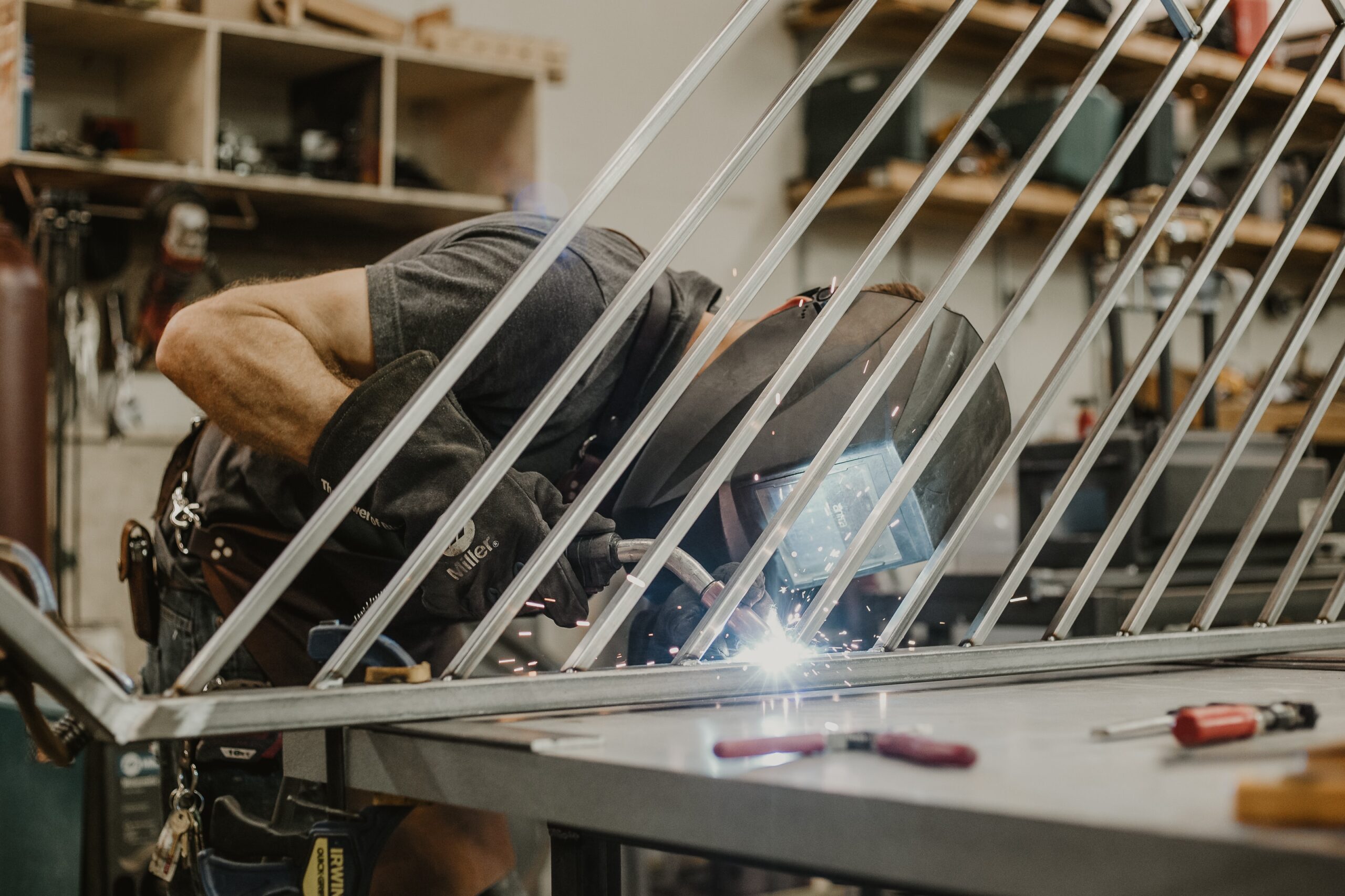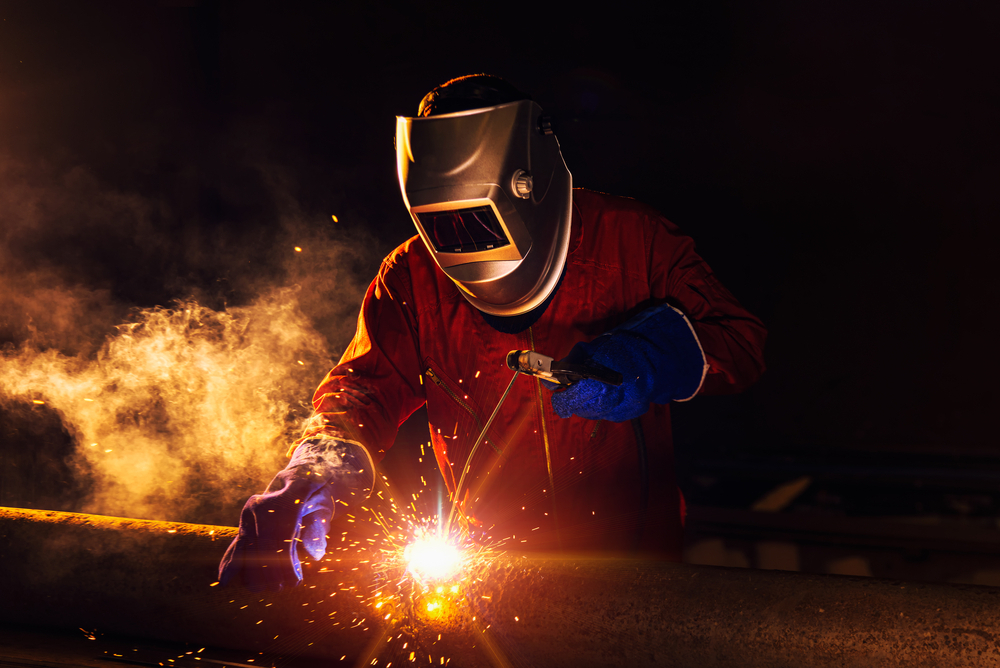Typical Welding Repair Service Issues and Just How to Address Them Effectively
Welding repair work frequently come across a variety of concerns that can endanger the stability of the last item. Typical troubles consist of insufficient penetration, porosity, and imbalance, among others. Each issue provides distinct challenges that call for details strategies for resolution. Comprehending these problems is essential for welders aiming to improve their end results and abilities. This discussion will certainly discover these common welding repair service problems and reliable approaches to address them.
Poor Penetration
Insufficient penetration takes place when the weld metal fails to completely fuse with the base product, leading to weak joints and possible architectural failures. This concern commonly comes from not enough warm input, inaccurate electrode angle, or improper welding speed. Welders might encounter poor penetration because of a mistake of the essential parameters for a certain material density or type. In addition, contamination on the base product's surface can hinder reliable bonding, aggravating the problem. To attend to poor penetration, welders must assure ideal setups on their devices and preserve a clean job surface area. Regular assessment of welds is advised to determine any deficiencies early, enabling for timely improvements and the avoidance of jeopardized architectural stability in welded settings up.
Porosity
Porosity is an usual defect in bonded joints that materializes as little gas bubbles entraped within the weld metal. This flaw can endanger the honesty of the weld, resulting in lowered strength and potential failure under anxiety. Montana Mobile Welding and Repair Belgrade Welding. Porosity generally emerges from contamination, dampness, or inappropriate welding techniques, which enable gases to leave into the liquified weld swimming pool. To resolve porosity, welders must assure proper surface area preparation, keep a clean workplace, and make use of appropriate welding parameters. Additionally, choosing the best filler material and shielding gas can reduce gas entrapment. Routine inspection and testing of welds can aid recognize porosity early, assuring prompt rehabilitative activities are taken, therefore preserving the high quality and integrity of the welded framework
Misalignment
Misalignment in welding can occur from numerous elements, consisting of incorrect arrangement and thermal development. Comprehending the origin is necessary for reliable resolution. Several modification techniques are readily available to straighten elements and guarantee structural stability.
Sources of Imbalance
Welding misalignment commonly stems from a range of underlying problems that can jeopardize structural stability. One key reason is incorrect fit-up of parts before welding, which can bring about spaces and uneven surfaces. Variations in thermal expansion throughout the welding procedure can likewise cause distortion, especially if the products being signed up with have various coefficients of expansion. Furthermore, poor securing and fixturing might fail to hold parts securely in position, resulting in motion throughout welding. Improperly maintained devices, consisting of welding makers and devices, may present disparities in the weld grain, additional adding to imbalance. Operator mistake, stemming from inadequate training or experience, can additionally play a substantial duty in creating misaligned welds.

Improvement Methods Available
Addressing misalignment successfully requires a combination of corrective methods customized to the details concerns handy. One typical method is the use of jigs or components to hold components in the right position throughout welding, making sure consistent positioning. Furthermore, preheating the products can assist reduce distortion and improve fit-up. For substantial imbalance, mechanical adjustment methods, such as making use of hydraulic jacks or clamps, can be employed to correct the placement before welding. Post-weld heat treatment might likewise be essential to alleviate stresses triggered by misalignment. Ultimately, mindful inspection and adjustment during the setup stage can stop misalignment issues from becoming significant issues, advertising a smoother welding procedure and boosting total structural honesty.
Distortion
Distortion is a common obstacle in welding that can occur from numerous elements, including uneven cooling and heating. Comprehending the reasons for distortion is important for executing effective prevention methods. Resolving this problem not only boosts architectural honesty however also boosts the total quality of the weld.
Reasons of Distortion
When subjected to the extreme warm of welding, products often undertake adjustments that can cause distortion. This sensation primarily emerges from thermal expansion and tightening during the welding procedure. As the weld location warms up, the product expands; upon air conditioning, it gets, which can develop inner stresses. On top of that, unequal home heating across a work surface can exacerbate these stress and anxieties, leading to bending or flexing. The sort of product likewise plays a substantial role; steels with varying thermal conductivity and coefficients of growth might respond in different ways, bring about unpredictable distortions. Moreover, poor joint design and inadequate fixturing can add to imbalance during welding, increasing the probability of distortion. Recognizing these causes is necessary for reliable welding fixing and prevention strategies.
Avoidance Techniques
Reliable avoidance techniques for distortion during welding concentrate on controlling warm input and making certain correct joint style. Preserving a consistent warmth input assists to decrease thermal development and tightening, which can cause distortion. Utilizing methods such as preheating the workpiece can additionally lower the temperature slope, advertising uniform heating. Furthermore, selecting appropriate joint designs, such as T-joints or lap joints, can enhance security and reduce stress and anxiety focus. Implementing correct fixturing to protect the work surfaces in place even more help in maintaining alignment throughout the welding procedure. Staggered welding series can disperse warmth more evenly, stopping local distortion. By using these approaches, welders can significantly decrease the probability of distortion and boost the overall quality of their welds.
Breaking
Cracking is a common concern encountered in welding repair services, usually resulting from different elements such as incorrect cooling prices, product choice, or insufficient joint preparation. The occurrence of splits can significantly jeopardize the stability of the weld, causing prospective failures during procedure. To resolve this problem, welders must initially examine the root causes, making sure that products are suitable and properly chosen for the details application. Furthermore, controlling the cooling price throughout the welding procedure is important; quick cooling can cause stress and bring about cracking. Appropriate joint layout and preparation likewise add to minimizing the go right here danger. Carrying out these techniques can enhance weld top quality and longevity, inevitably reducing the chance of splitting in ended up weldments.

Insufficient Combination
A significant problem in welding repair work is insufficient blend, which occurs when the weld metal does not effectively bond with the base product or previous weld passes - Montana Mobile Welding and Repair Belgrade Welding. This problem can bring about weaknesses in the joint, possibly jeopardizing the stability of the welded structure. Elements contributing to incomplete blend include not enough warmth input, improper welding technique, and contamination of the surface areas helpful hints being joined. To resolve this problem efficiently, welders must guarantee proper pre-weld cleaning and surface area preparation, in addition to adjust their welding parameters to achieve adequate infiltration and blend. Routine inspection during the welding process can additionally assist determine insufficient combination early, permitting prompt corrective measures to boost the total quality of the weld
Overheating
While welding repairs can enhance structural stability, overheating provides a considerable obstacle that can cause product destruction. Extreme warmth during welding can alter the mechanical buildings of metals, leading to lowered toughness, boosted brittleness, and warping. This sensation look at this now is particularly essential in high-stress applications where architectural integrity is extremely important. Identifying getting too hot can involve visual assessments for staining or distortion, as well as monitoring temperature level during the welding process. To minimize the risks connected with overheating, welders must use suitable techniques, such as regulating warmth input, adjusting travel rate, and making use of ideal filler products. Additionally, applying pre- and post-weld warmth therapies can aid bring back product residential properties and enhance the general high quality of the repair, ensuring lasting efficiency and security.
Frequently Asked Concerns
What Are the Typical Indications of a Welding Issue?

Just How Can I Examine My Welds for Top quality?
To evaluate welds for high quality, one can make use of visual evaluations, ultrasonic testing, and radiographic approaches. Each method guarantees architectural stability, recognizes issues, and verifies adherence to specified standards, inevitably improving the reliability of the bonded joints.
What Security Precautions Should I Take While Welding?
When welding, one need to focus on safety and security by putting on proper individual safety tools, making certain proper ventilation, protecting combustible materials away, keeping a clean workspace, and understanding environments to avoid injuries and crashes.
Can I Fix a Weld Without Remodeling the Entire Joint?
Fixing a weld without redoing the entire joint is feasible, depending upon the damage (Montana Mobile Welding and Repair). Techniques such as grinding, including filler material, or utilizing a welding procedure can efficiently deal with specific problems while protecting the bordering framework
What Tools Are Important for Effective Welding Repair Works?
Essential devices for reliable welding repairs consist of a welding maker, cable brush, mill, protective gear, clamps, and filler materials. Each device plays a vital function in ensuring quality and safety and security during the repair process. Porosity commonly arises from contamination, dampness, or improper welding strategies, which enable gases to leave into the molten weld pool. Inadequately maintained tools, consisting of welding machines and devices, might present disparities in the weld grain, further adding to imbalance. When subjected to the intense heat of welding, materials commonly undertake modifications that can lead to distortion. Fracturing is an usual concern encountered in welding repair work, typically resulting from different aspects such as inappropriate cooling prices, material option, or inadequate joint prep work. A significant issue in welding repairs is insufficient blend, which takes place when the weld metal does not adequately bond with the base product or previous weld passes.